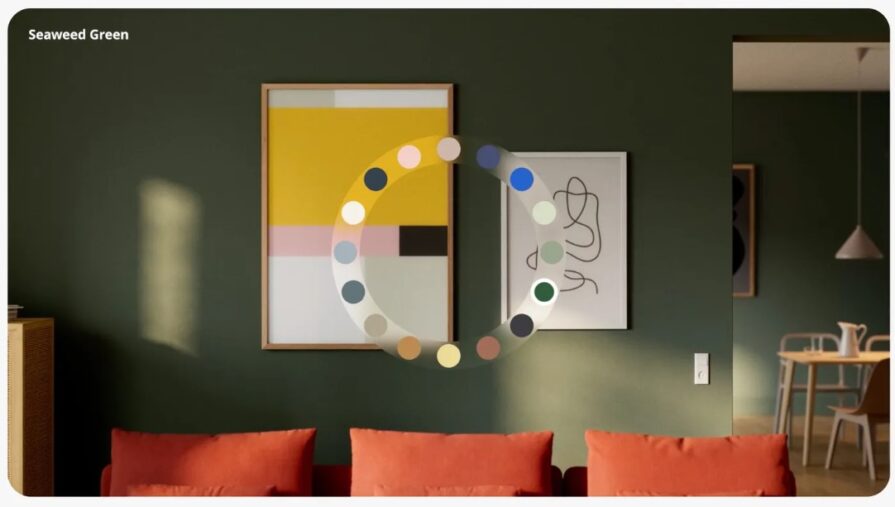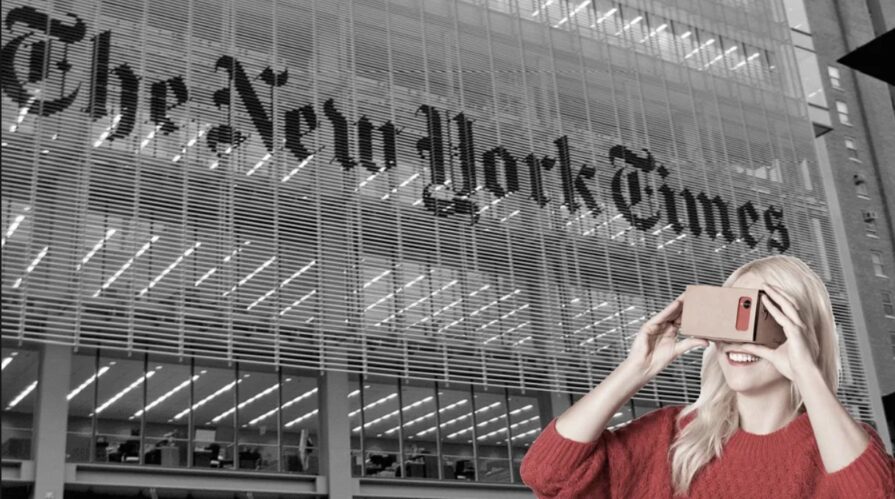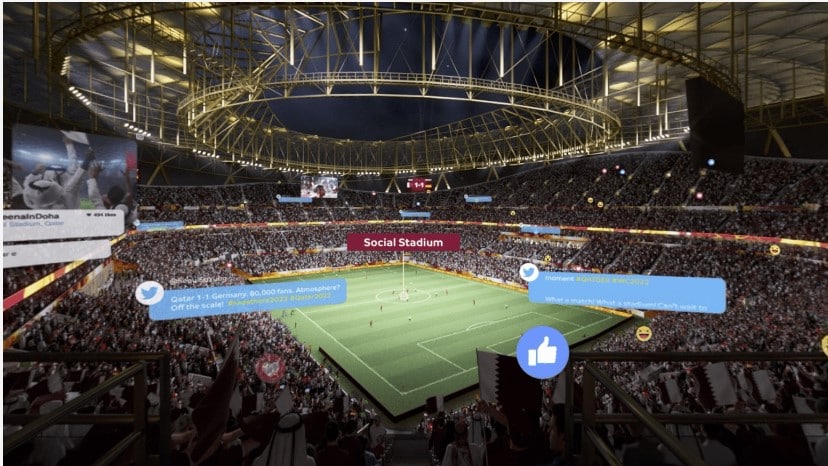Far from being merely a trendy term, augmented reality (AR) has rapidly become an essential tool in actively transforming and reshaping how PR campaigns are conceptualized and delivered.
To showcase this, let’s explore the tangible benefits provided, as well as strategies for incorporating AR into various PR initiatives. From launching products in a virtual space to creating press releases that engage and interact with their audience in more direct and immersive ways, the potential of AR in PR is vast, largely untapped, and still developing.
Through a series of compelling case studies, we’ll provide a practical guide for PR professionals looking to leverage this new frontier in technology.
Transforming PR with augmented reality
The integration of AR in public relations is marking a significant shift in how companies engage with their audience. AR brings an interactive dimension to PR campaigns, allowing brands to create immersive experiences that resonate deeply with consumers.
For instance, virtual product launches have taken a front seat, especially in industries like automotive and tech, where AR enables consumers to explore products in a 3D space, offering a hands-on feel without physical presence.
Moreover, AR is revolutionizing press releases, transforming them from static, text-heavy documents into dynamic, interactive experiences. Companies can now include 3D models, videos, and other interactive elements that bring their stories to life by integrating AR into their campaigns.
This type of innovative approach actively increases engagement while also aiding in better media coverage, as the press has more compelling material to work with.
On top of all of this, the business expenses associated with integrating AR tech into your campaigns can be written off, making them even more appealing. However, even though the IRS audit rate for small businesses has been slowly going down, you still shouldn’t go overboard with excessive equipment without any results to show for it, just to be on the safe side.
Successful case studies of AR in PR
The real-world application of AR in PR isn’t some far-out novelty that we’re years away from seeing become a reality. In fact, several companies have already seen success with AR in their PR strategies.
IKEA’s AR catalog
IKEA, the Swedish furniture giant, set a benchmark in AR’s application within PR. Their AR app, IKEA Place, allows customers to visualize the company’s products in their homes, bridging the gap between imagination and reality.
Customers can see how different furniture pieces would fit and look in their space by simply scanning their room with a smartphone.

Photo: IKEA (via Wired)
This innovation actively enhanced customer experience and revolutionized retail PR by providing a tangible connection between the product and the consumer and doing so in a remarkably convenient way.
The app’s success is evident in its widespread adoption, media coverage, and its role in boosting IKEA’s brand as an innovator.
The New York Times’ VR journalism
The New York Times took a significant step forward by directly incorporating VR into its storytelling, particularly targeting the growing segment of Gen Z readers. Their NYT VR platform, launched with Google Cardboard viewers, created a new narrative medium.
The debut VR film, “The Displaced,” about refugee children, achieved over 1.5 million views and an impressive average engagement time.

Source: Upload
This venture earned them the mobile Grand Prix at Cannes Lions 2016 and set a new standard in journalism, demonstrating the powerful emotional and empathetic connections that VR can forge in storytelling.
Pizza Hut’s AR gaming experience
Pizza Hut combined nostalgia with cutting-edge AR technology in a campaign featuring the classic game PAC-MAN.
By turning their pizza boxes into playable PAC-MAN games via a QR code, they connected past memories with present experiences, engaging consumers on a completely new level never before seen. In collaboration with Bandai Namco Entertainment, the campaign resonated quite well with consumers, achieving over 1.5 million views and significant playtime.

Source: Pizza Hut (via Business Insider)
Remarkably, the campaign led to the sale of 10.6 million PAC-MAN boxes, outperforming major gaming consoles in sales for a month, highlighting AR’s potential to drive tangible business results.
FIFA World Cup Qatar 2022’s AR and VR integration
The FIFA World Cup Qatar 2022 marked a historic moment in sports marketing with the extensive use of AR and VR by sponsor brands.
These technologies transformed fan engagement, allowing spectators to enjoy augmented reality features at stadiums and virtual experiences from their homes.

Source: Neliti
Brands like Adidas, Coca-Cola, and Qatar Airways utilized AR filters on social platforms, connecting with a youthful audience through immersive interactions. The AR technology also enhanced the in-stadium experience, assisting fans in navigating the venue.
This integration led to massive digital engagement, with the World Cup recording nearly 6 billion social media engagements and a cumulative reach of 262 billion. The event showcased AR’s potential to elevate the fan experience, create personalized interactions, and foster brand loyalty.
Harnessing AR for enhanced storytelling
Storytelling is at the heart of effective PR, and AR offers a new dimension to this art; through AR, PR professionals can create narratives that are not just told but experienced.
For example, a company launching a new sustainability initiative could use AR to take viewers on a virtual tour of its eco-friendly facilities, making the company’s commitment to sustainability more tangible and relatable for consumers and investors.
Or better yet, companies in the future will even be able to generate documents using Python, all within a virtualized version of reality. This might even one day become a valid alternative to online document signing, perhaps signaling a return to skeuomorphism in design for digital apps and other software.
Or imagine one day, seeing realtors use AR to give people guided views of apartments still under construction as a means of getting them to sign for an unsecured property loan. That’s why AR is tailor-made for PR—it’s one of the only tools that allows businesses to visualize that which doesn’t exist, all while not straying too far away from reality, as is the case with VR.
Furthermore, AR can be used to add layers of depth to stories. For instance, a healthcare company could use AR to provide a visual representation of how a new drug works inside the human body.
Such immersive storytelling doesn’t just educate, but actively builds a stronger emotional connection with the audience.
Implementing AR in PR campaigns
Implementing AR in PR requires a blend of creativity and technical know-how, and the first step is to define the campaign’s goals and understand how AR can enhance the message. The objective should guide the AR integration, whether it’s to demonstrate a product’s features, showcase a brand’s story, or provide an interactive experience.
The next step is to choose the right AR technology and platform: various AR tools are available to build with, ranging from simple app-based solutions to more sophisticated systems.
The choice depends on the campaign’s scope, the intended audience, and the level of interaction desired. It’s also crucial to ensure that the AR experience is easily accessible and user-friendly, as technical hurdles can deter engagement.
The future of AR in PR
As AR becomes more mainstream, we can expect to see more innovative applications and uses of it in PR campaigns going forward.
The potential for personalization, for example, is immense. Imagine an AR experience that adapts to each user, providing a tailored narrative that resonates on a personal level. Such advancements could revolutionize how brands connect with their audiences.
Moreover, the integration of AR with other technologies like artificial intelligence or AI and machine learning could lead to even more sophisticated and interactive PR campaigns.
As these technologies continue to evolve, the possibilities for creative and impactful PR strategies are bound to expand, offering new ways for brands to engage with their audiences and tell their stories.



